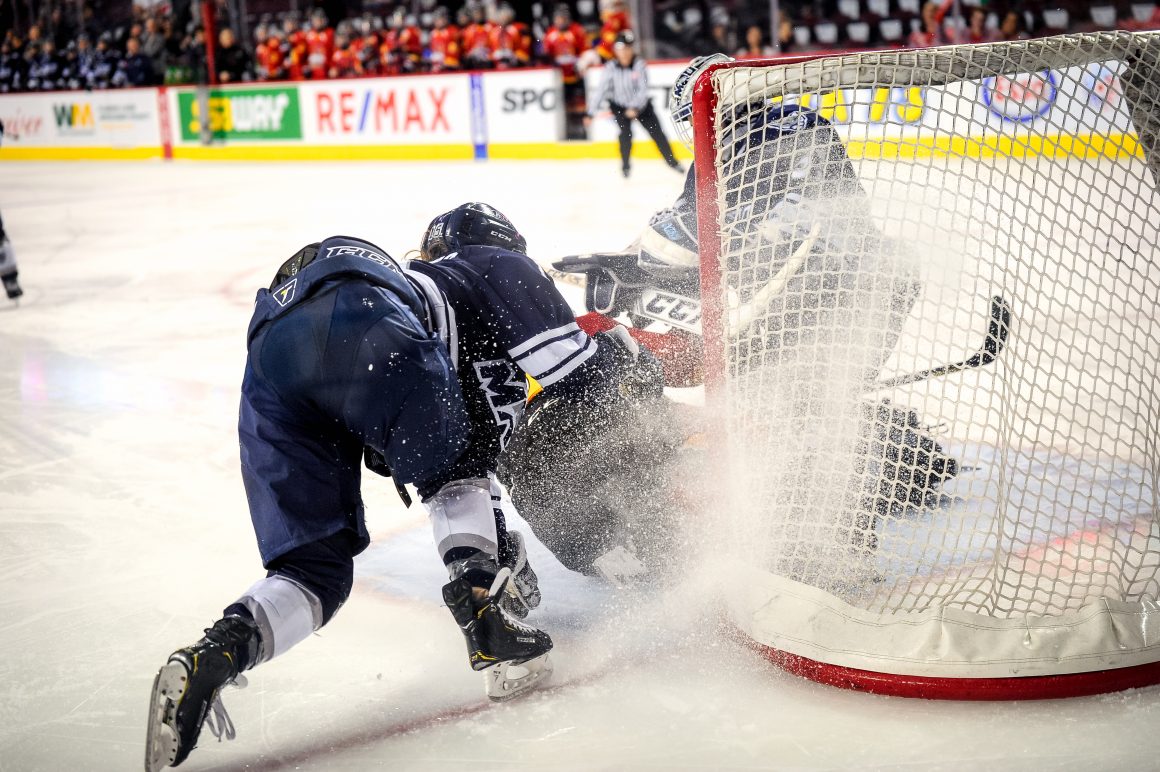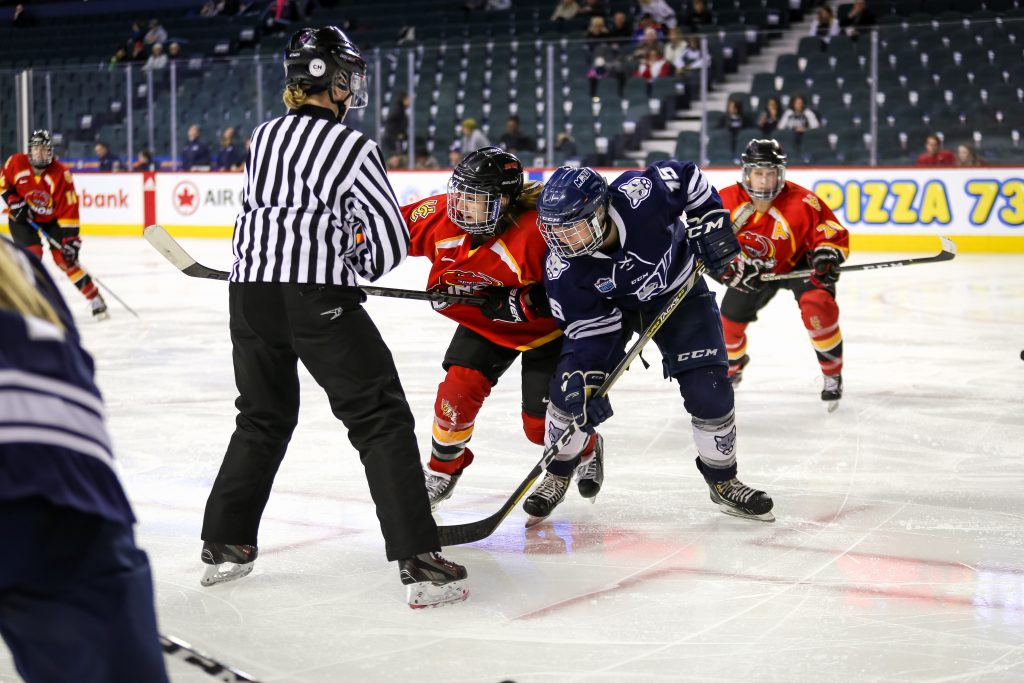
The fold of The Canadian Women’s Hockey League is bad news but may offer new beginnings
By Lauren Olson, October 9 2019 —
Girl’s hockey is one of the fastest growing sports right now, with more young girls interested in playing and joining teams than ever. But what do they have to look forward to right now, with a recently collapsed Canadian Women’s Hockey League (CWHL) and a current boycott by the sport’s top players? There are a lot of question marks around the larger topic of professional women’s hockey and I’m not sure what the answers are. But I do have thoughts.
For years there have been two professional leagues in North America, the CWHL and the National Women’s Hockey League (NWHL), each comprised of around 6 teams. What’s important to know about these leagues is that while they are technically professional, the players were not being paid liveable wages. In fact, it wasn’t until a couple years ago that the women were paid at all. Women playing in these leagues often had to keep part- or full- time jobs to live off, while training and playing games in their spare time.
This past spring, the CWHL folded, explaining that the organization was an unsustainable business model, leaving players with no league to play in. Not surprisingly, there was something of an uproar and a lot of opinions, suspicions, and rumours going around. What were the players supposed to do now? Would they join the NWHL? Would another league be formed? Would the National Hockey League step in?
Shortly after the league folded, around 200 players including the top calibre players took a stand and together pledged to not play in the upcoming season in North America. Their demands included a unified league in which they could play and receive liveable wages, health benefits, and the resources they believed they deserve. They formed the Professional Women’s Hockey Player’s Association (PWHPA) which serves as a union of sorts to look out for their best interests.
What’s happening now?
There are some players who are still playing in the NWHL this season, though the top players are missing from those rosters so the quality of game is inevitably compromised. The players who spearheaded the PWHPA have organized the “Dream Gap Tour,”— a small tournament they’ve created with four teams touring and playing against one another to raise awareness and interest for the game.
Why is it that women’s hockey isn’t taking off in a big way?
This is the root of the issue, in my opinion. How many people reading this knew that Calgary had a team in the CWHL, not to mention the top team the last couple of years? Did you know the name of the team was the Calgary Inferno? They won the Clarkson Cup last year, which is the league’s Stanley Cup equivalent. The team also boasted a roster of at least a dozen Canadian and U.S. National Team players. The top players were right here in Calgary, and they struggled to sell tickets to home games. Tickets which, by the way, cost a measly $15. Fans don’t bat an eye to pay $250 to go see a Flames game, even when the Flames aren’t doing well.
What’s the problem?
Is it exposure? Is it a general misunderstanding of the women’s game? Is it the quality of the play? Whatever the reason, the bottom line is that the Clarkson Cup final in Toronto last year sold around 4,700 tickets. An average Calgary Hitmen game sells about 8,000. The biggest game of the whole season drew just around half of what a regular season game draws for the Western Hockey League games. For even more perspective, an average home game for the Calgary Inferno was around a couple hundred people, even when they were playing rival teams, such as Les Canadiennes from Montreal, who also had a star-packed roster, including Marie Philip-Poulin, who scored the winning goal for Canada in two Olympic matches.

Photo by Mariah Wilson
My opinion is that it’s a combination of a lot of problems. The problem of having two discrete leagues for the last few years, spreading the top talent thin across both leagues, is now no longer an active issue, however the history of competing leagues continues to haunt. The problem that women have to keep other jobs while playing makes training, studying the game, improving and practicing difficult and time-restrained. Limited practicing and limited focus inevitably compromises the quality of the games. I mean this in no disrespect, but to get better and to elevate the product, a lot of time has to go into practicing. When players have full time jobs and families to balance, it’s impossible to put full dedication into hockey.
Some people say to simply “pay the team more money so they don’t have to work”. Sure, that makes sense. But who is going to pay them? Not ticket sales, clearly. So who else? Sponsors? Why would a big-name sponsor donate a bunch of money to hang a banner in a rink that only 200 people will see? Business-wise, it just doesn’t make any sense. You could argue that they’d do it out of the goodness of their hearts but, I’m sorry, that’s just naive and that’s not how business works. Ask yourself if you personally would donate $200 to support women’s hockey? I’m guessing that because most of you have never spent the $15 admission to go see a game, you’re not gonna be forking over any donations anytime soon.
I’m going to (tentatively) nod at the elephant in the room — the gender component. In my opinion, it is not the be-all-end-all. I know this will ruffle a few feathers but please keep an open mind. If there is very little money coming in, there isn’t money to pay players. I really don’t believe there is some fat old white guy smoking a cigar, up in some office saying “Bahh, pay them less, they’re just women.” The fact is, not enough tickets are selling to generate the income required to pay players the liveable wages they’d like. It sucks, but it’s the reality right now. I’m aware there is a built-in assumption that women’s sports are not as good as men’s — that is a prejudice which I’m sure influences many people’s decisions about whether or not to go watch women’s hockey — or any female sport — in the first place. I don’t deny this is a hurdle but I don’t single it out as the biggest problem. Rather than being mad about that prejudice and focusing on it, I believe it would be far more productive to work towards proving that assumption wrong. Prove all those assumers wrong by putting in the time, as an organization, to grow, improve and make the product better. Other female sports have done so — the WNBA is a great example — but it does takes time.
Where does that leave us? As it stands now, the young girls joining hockey teams don’t have a professional league to aspire to, but they do have other options. There is college and university, national teams, and opportunities to play overseas. Of course, having a North American professional league is an attractive idea but the infrastructure simply isn’t there right now.
It’s my opinion that it is possible to build a league that will eventually be what every young girl hockey player aspires to play in, but it’ll take some time to grind it out, playing for little to no money— not having the glory or the big paychecks. There’s a lot being said about the current boycott as a step in the right direction and hopefully that’s true. The way I see it, the younger generation of girls need to look up to players who know the game of hockey. I understand we’re in a bit of political time right now, but we can’t lose sight of what it’s about. If it truly is for the love of the game, girls, you gotta go play hockey! Watch the NHL teams, study how the game is played tactically, study players, listen to coaches, play against boys. Knowing the game inside and out is what the NHL is. They play the game. That’s why it works.
Girls, if you love hockey, learn and play the game of hockey. Find a way and build your league from the ground up. To me, that’s true empowerment! Some have said that the CWHL folding was a tragic time and a sad day for women’s sports but I believe it’s an opportunity. It’s not a failure on the part of Canada, it’s not an attack on women, and it’s not a personal offence. It’s an opportunity for growth, for improvement and to build something to be proud of, be sustainable, and most importantly, be something young girls who want to be hockey players can look forward to being a part of.
